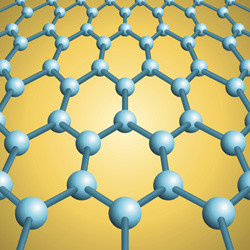Towards nanoelectronics: Models and mechanisms
In modern electronics and optoelectronics the major trend is to expand the frequency range towards terahertz and infrared by incorporating nanotechnology. Nanoelectronics, with fundamental components having the dimensions of atoms, increases component integration and decreases power consumption. Among the nanomaterials receiving intense interest are carbon-based nanostructures, including single- and multi-wall carbon nanotubes (CNTs), onion-like carbon and graphene. The EU-funded project CACOMEL (Nano-carbon based components and materials for high frequency electronics) investigated linear and non-linear electromagnetic effects in nano-structured carbon used in nanocircuits. The project performed theoretical and experimental investigations of underlying physical mechanisms. Partners developed an electromagnetic compatibility (EMC) concept of the circuits with nano-sized components based on classical electrodynamics and quantum transport theory in nanostructures. Classical EMC concepts were reconsidered taking into account quantum correlations and tunnelling, as well as spin-spin and dipole-dipole interactions. The concept was illustrated by the example of CNT-based interconnects. CACOMEL obtained a first experimental evidence of localised plasmon resonance in composite materials containing single-wall carbon nanotubes (SWCNTs), which depended on the length of the nanotubes. Scientists also developed a numerical method to calculate the electronic structure of point impurities in the SWCNTs. Comparison of dielectric and electromagnetic properties in microwave frequency range of nitrogen-doped and pure CNT-based composites showed the importance of doping. Experimental observations revealed electromagnetic enhancement in doped CNTs, in agreement with the theoretical model of 'metallisation' of semiconducting CNTs. Electronic transport in carbon nanointerconnects was modelled with the arrays of graphene nanoribbons and bundles of CNTs. These models were also used to study the challenging problems in nanopackaging. Scientists synthesised highly conductive, nanometrically semi-transparent pyrolytic carbon films on dielectric substrates. The films had a remarkably high absorption up to 50 % of incident power, which makes them attractive for electromagnetic shielding applications. Finally, study of the third-order non-linearities in SWCNTs revealed carrier localisation as well as tunnelling through the insulating barriers between conducting regions. Overall, CACOMEL contributed to the development of nanoelectromagnetics, a new research discipline important for telecommunications, biomedicine and cybersecurity.







